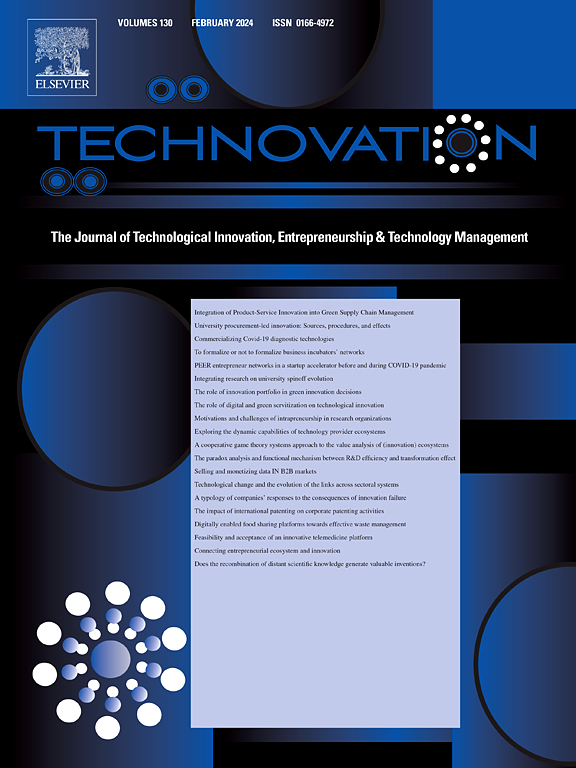回到工业研究的未来:通用电气、AT&T和杜邦早期的双重影响研究(1902-1948)
IF 10.9
1区 管理学
Q1 ENGINEERING, INDUSTRIAL
引用次数: 0
摘要
在20世纪90年代发生的企业研究大屠杀之后,企业有必要重塑企业研究的管理方式。尽管有几种解释可以解释企业研究为何会失败,但管理科学缺乏能够解释成功管理的模型。本文通过提出这样一个模型来解决这一差距。在方法上,本文采用了历史方法,因为它特别适用于:a)在几个时间范围内对明确评估的事实进行成功评估;b)使用与过去管理如何发生有关的丰富、纵向、控制良好的数据。因此,本文讨论了通用电气、at&t贝尔实验室和杜邦公司的企业研究的战略作用和内部功能。这四个案例表明,成功的企业研究可以归因于企业研究、战略、新产品开发和科学界之间同时存在的双向联系。这六重联系构成了具有战略意义和科学意义的企业研究的条件。结果表明,与普遍的看法相反,1)研究被仔细地整合到公司的战略中,2)通用电气、美国电话电报公司和杜邦提供了基础研究与新产品开发之间富有成效的互动的例子,这些互动导致了新产品和科学突破。因此,本论文有助于正在进行的关于公司研究,特别是“双重影响”研究的作用和管理的辩论。本文章由计算机程序翻译,如有差异,请以英文原文为准。
Back to the future of industrial research: Early double-impact research at General Electric, AT&T and DuPont (1902–1948)
After the corporate research bloodbath that occurred in the 1990s, there was a need for firms to reinvent the management of corporate research. Although several explanations exist for how corporate research can fail, management science lacks models that can account for successful management. This paper addresses this gap by proposing such a model. Methodologically, this paper adopts a historical approach because it is particularly adaptable to a) assessing success on clearly evaluated facts at several time horizons and b) using rich, longitudinal, well-controlled data related to how management occurred in the past. This paper thus discusses the strategic role and inner functioning of corporate research at General Electric, AT&T Bell Labs and DuPont. These four cases demonstrate that successful corporate research can be attributed to the existence of simultaneous and bidirectional links between corporate research, strategy, new product development and the scientific community. These sixfold links constitute conditions for corporate research that are strategically and scientifically relevant. The results show that, contrary to widespread belief, 1) research is carefully integrated into the firm's strategy, and 2) GE, AT&T and DuPont provide examples of the fruitful interaction between fundamental research and new product development that leads to new products and scientific breakthroughs. The present paper thus contributes to the ongoing debates on the role and management of corporate research, particularly “double-impact” research.
求助全文
通过发布文献求助,成功后即可免费获取论文全文。
去求助
来源期刊

Technovation
管理科学-工程:工业
CiteScore
15.10
自引率
11.20%
发文量
208
审稿时长
91 days
期刊介绍:
The interdisciplinary journal Technovation covers various aspects of technological innovation, exploring processes, products, and social impacts. It examines innovation in both process and product realms, including social innovations like regulatory frameworks and non-economic benefits. Topics range from emerging trends and capital for development to managing technology-intensive ventures and innovation in organizations of different sizes. It also discusses organizational structures, investment strategies for science and technology enterprises, and the roles of technological innovators. Additionally, it addresses technology transfer between developing countries and innovation across enterprise, political, and economic systems.
 求助内容:
求助内容: 应助结果提醒方式:
应助结果提醒方式:


